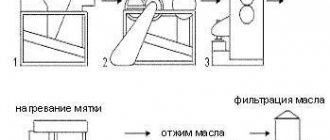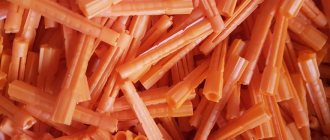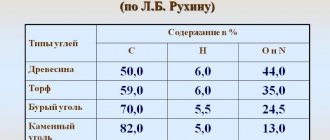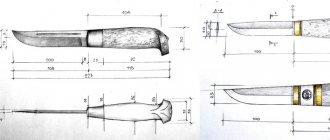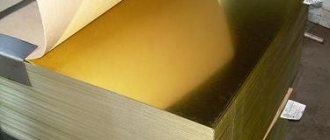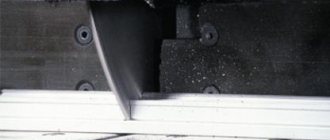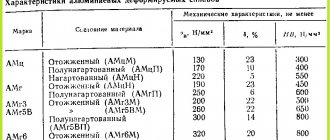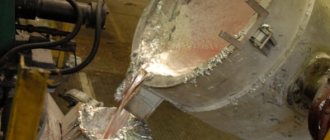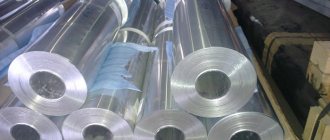The first metal can appeared in 1935 as an alternative to the difficult to recycle glass bottle. Such a container weighed 992 grams; the question of modifying the material for manufacturing was a matter of time. And so it happened: in 1958, the kilogram metal container was replaced by an aluminum can weighing 15-25 grams. The consumer liked the new type of packaging for drinks so much that the aluminum can remains popular today with minimal structural improvements. There are 285 billion aluminum containers produced worldwide. If the containers produced in a week are placed on top of each other, the structure will reach the Moon. The production of aluminum cans is a profitable and socially significant type of business, like any business that processes raw materials.
Brief analysis of the business: Costs of organizing a business: 115-120 thousand dollars Relevant for cities with a population: from 1 million people Situation in the industry: low competition Difficulty of organizing a business: 4/5 Payback: 9-10 months
Why is recycling needed?
The main value of recycling is the production of aluminum, which is sent back to production.
Standard secondary alloy composition
Al (aluminum) – 97%;- Si (silicon) – 0.26%;
- Fe (iron) – 0.41%;
- Cu (copper) – 0.2%;
- Mn (manganese) – 0.87%;
- Mg (magnesium) – 1.22%;
- Ti (titanium) – 0.04%.
These indicators meet the standards of alloys 3004 and 3104, used for the production of the body of aluminum (or tin) beverage cans. With the right approach, aluminum can be reused an unlimited number of times.
What do you need to consider?
When organizing your business activities, you must remember that the collection of non-ferrous metals is sometimes accompanied by the criminalization of business. It should be understood that such things do not just lie around. And not only cans, but also serviceable products can be brought to collection points, among which are electrical cables, wires from transformers and power lines. If problems with law enforcement agencies are not needed, then it is only necessary to establish the acceptance of aluminum cans - and nothing more.
Collecting cans for recycling
The most common method is collection at a scrap metal collection point, where the cans are compressed and sent to the factory.
There is a less common method - separate waste collection; it is much easier for the average person to use, but it is quite difficult to organize.
When throwing a can into a bin for aluminum waste, you should not crush it, since at the sorting point the automation identifies the can by its shape and texture.
Interesting Facts
- The first cans were similar to the usual tin containers and were opened with a can opener. The sharp edges injured the consumer.
- In 1963, the cans were equipped with a tear-off tab, similar to the one found on modern juice cartons. The author of the invention is Ermal Cleon Frase, an inventor from Ohio.
- The non-removable eyelet, with which the container is opened, was invented 17 years after the release of the first beer can - in 1975.
- By 1980, Dayton Reliable Tool, Frase's company, had revenues of more than half a billion dollars.
- The jar collection of John Ahrens of New Jersey consists of 15,000 pieces.
- In Darwin, Australia, a regatta is held every year on floats made from empty cans.
- Waste activist and architect Mike Reynolds builds houses out of aluminum cans. The building material is cans held together with cement mortar.
- The Japanese brewing company Kirin Brewery produces the lightest aluminum cans. The weight of a 350 ml container is 14 grams.
- Recycling one aluminum container saves enough electricity to power a TV for three hours.
- In plinking, recreational shooting at non-standard targets, aluminum containers are the most popular target.
- The most expensive Rosalie Pilsner beer can was sold in 1981 for $6,000.
Processing technology
Aluminum scrap arrives at the recycling plant in the form of pressed cubes. This format is not suitable for recycling cans, so they are crushed and sent to a sorting line.
Primary sorting
On the line, a magnetic separator checks for the presence of magnetic metals. Next, using an air knife, heavy impurities are separated, which fall down, and the aluminum literally flies further. Primary sorting ends here, and the scrap is sent for paint removal.
Removing varnish
It is necessary to remove the paint so that during melting there are no substances in the alloy that can ignite. Residues of paint cause the scrap in the smelting furnace to begin to burn and the metal burns along with the paint.
There are two ways for these purposes
- A conveyor oven in which the varnish is kept for a long time at a temperature close to 520⁰C. The combustion chamber is filled with volatile compounds of paint and varnish coatings, which contribute to the rapid burnout of the varnish.
- A rotary furnace, in which heating occurs in stages, with a gradual increase in temperature to 615⁰C by the last stage. This method allows you to heat the metal almost 100 degrees higher than in a conveyor furnace without melting the aluminum scrap.
Both methods carry the risk of losing a lot of metal due to mistakes. It is important to maintain the temperature within a given range, since if there is insufficient heating, a resinous layer will remain , which will catch fire in the smelting furnace. And if the metal overheats, it will begin to burn before it has even reached the melting point.
Melting
To obtain a high-quality mass, you need an oven in which you can remove excess components. After melting aluminum scrap, contaminants float to its surface
They just need to be removed from above and sent to the rest of the slag. The mass of slag does not exceed 15% of the total mass of aluminum brought for processing.
The resulting alloy is sent to a continuous melting furnace. Bulk scrap and pure aluminum are added to the same furnace so that the quality of the alloy meets the needs of modern production.
Treatment
The next stage of the conveyor is the mixing furnace, where other metals are added to the alloy, and they are also purged with inert gas to get rid of impurities.
Ingot casting and sheet formation
The resulting alloy, ready for reuse, is cast into ingots weighing 15 tons. The resulting ingot is formed into an aluminum sheet by rolling.
The process produces a lot of “extra” metal due to the cutting of the ingot and the resulting sheet. Such waste is called internal and is immediately sent for re-melting, since the chemical composition of the metal waste coincides with the specified one.
Marketing and sales channels
As noted, the sale of finished products before the start of production is focused on at least one reliable buyer. A long-term supply contract minimizes possible risks in terms of quality and volumes of supplied products. If capacity exceeds current supply volumes, production is stable, and you can move on to searching for new partners.
The marketing component of the business is simple: the company’s representative website with a detailed description of the technological characteristics of the products and product range is a sufficient means for promotion. Periodic ways of promotion are industry and thematic exhibitions. The list includes metallurgical exhibitions and expositions where manufacturers of food products, household chemicals, and drinks are represented. Traditional types of advertising are inappropriate and will only increase costs.
Otherwise, the company's marketing department is guided by a detailed database of can consumers, compiled in-house. Cold contacts are made with consumers; at the slightest demand for products, acquaintances and connections are made. Over time, such connections lead to the supply of small pilot batches and the conclusion of contracts for large volumes.
Melting at home
The melting point of aluminum is low enough that it can be melted using improvised means at home. Further use of aluminum depends on individual purposes
You can take it to a scrap metal collection point at the price of non-ferrous metal or use it in everyday life by smelting the required shape. And for particularly advanced craftsmen, there is the opportunity to turn a blank from a blank on a lathe.
Necessary materials
- Aluminum scrap.
- Bricks.
- Coal.
- Metal grate with small spaces between the bars.
- Any hairdryer.
- The pipe into which the hair dryer diffuser will go.
- Crucible.
- Low tide mold.
- Flux for aluminum.
Before starting melting, aluminum cans need to be crushed so that they take up minimal space, or even better, crushed.
Making a furnace
The furnace for melting metal consists of two levels. The wall material is brick, as it retains heat well. Bricks can be laid without mortar, pressing them together.
The lower level of the furnace is used to force air in and a pipe with a hairdryer at the other end is connected to it. It is important that the pipe is directed at a slight upward angle.
A metal grate is placed on top of the frame, through which coals should not fall down; an upper level is formed above this grate.
Coal will be heated on the second tier of the stove and it is important that the brick is tightly laid for maximum heating. If the furnace is larger than the crucible, the empty space can be covered with a brick on top.
Crucible and casting mold
The most important thing in a crucible for melting aluminum is that the melting temperature must be greater than 800⁰C. A steel container with a wall thickness of more than 5 mm is suitable. The best solution from available means is a cut-off fire extinguisher cylinder with a welded handle made of fittings. The tip of the crucible needs to be sanded to make the pouring process easier.
The requirements for the ingot mold are identical. It is important that the material does not melt from liquid aluminum, and further wishes are individual.
Starting the furnace and melting
The coals are lit on a metal grate and after they burn out, the hairdryer is turned on to bring up the desired temperature. At this moment, a crucible is placed in the furnace, the walls of which are lubricated with flux. Thanks to the flux, the slag will not stick to the walls , but will float to the surface and can be removed.
Scrap is loaded into the heated crucible and added during the melting process until the desired level of aluminum is reached. Next, the slag is removed using improvised means. A spoon is best for this.
Aluminum casting is carried out continuously at the same pace, to eliminate bubbles that may form due to uneven casting.
The resulting form is removed while the aluminum is still hot and easily comes off the walls.
Besides this, there are many other methods , but this one is the easiest to implement and at the same time the safest. Anyone interested in melting aluminum at home will be able to put this method into practice and end up with an ingot of almost pure metal.
Costs and return on business
According to the owners of the facilities, the profitability of producing aluminum containers is higher than the profitability of the business producing packaging materials and rolled aluminum. The average untested return on the market is 22%. Market participants calculate profitability based on many years of experience, which assumes the stability of production relations at each stage.
We recommend reading:
- production of biofireplaces as a business –
- how to organize the production of welding electrodes –
- how to organize a polyethylene production plant -
- foam rubber production –
- production of fiberglass reinforcement –
- production of polystyrene foam –
An approximate calculation of production costs and expenses when starting a business looks like this:
- acquisition and installation of a production line with a capacity of 10 thousand cans per shift: $60,000.
- Repairs, additional equipment of the premises, purchase of office equipment: $15,000.
- Creating a stock of raw materials: $15,000.
- State registration, registration of permits, production certification: $6,000.
- Salary: $3,000.
- Utilities: $1,500.
- Working capital, safety stock: $15,000.
Consumers are willing to buy an aluminum can at a weighted average price of $0.05 or 5 cents, in which $0.025 is the cost of raw materials. Accordingly, two work shifts will bring in gross production income of $500 or $12,000 per month for 24 working days. Thus, the payback period for the business will be 9-10 months without taking into account the tax base. The amount of tax deductions will proportionally increase this time. At the same time, the profitability before taxes is 17.5%.
The aluminum can business is dangerous for amateurs. The business owner has experience in developing production of similar volumes, business reputation, and connections. Professionalism of management, professional knowledge, understanding of the market are integral criteria when deciding to launch production.
The aluminum market is characterized by a high share of monopolies with a certain part of state interests. Cooperation with monopolistic producers is characterized by a lack of flexibility and loyalty to partners. Therefore, the responsibility and risks when deciding to enter a business are high.
Finding a larger room
First of all, you will need to find a good premises. It should be understood that it must be quite spacious, since equipment will subsequently be installed in it. In addition, the workshop must be heated and well lit.
In addition, a high-quality ventilation system must be established. In addition to finding premises, you will also need to register your business again. Only instead of an individual entrepreneur you need to choose an LLC, since you will be dealing with legal entities. They are the ones who will become your clients.
The final part of the can production
The production of aluminum cans ends with the last stage - the formation of the neck of the container, the width of which is approximately five centimeters. This process is quite complex, since it is important that there are no violations in the technological process. In total, there are about eleven stages in the production of cans.
Financial part of the question
What costs will it cost to set up a can collection point? On average, it will cost about three thousand rubles per month to rent the premises. At first, you can hire one employee. He will need to allocate about 9 thousand rubles a month for his salary. You also need to purchase electronic scales. They will cost about 3 thousand rubles.
There is no point in talking about payback, as it will come very quickly. And there will even be profit. The whole point is that there are a huge number of aluminum cans in cities. And many want to make at least a little money from them. Therefore, the question of where to donate aluminum cans can be heard quite often.

